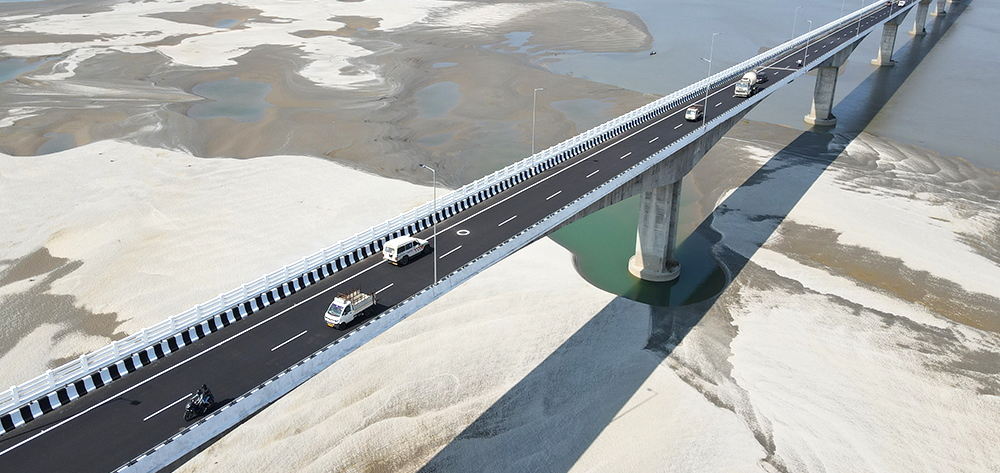- Feedback
- Sitemap
- Skip to Main Content
- Screen Reader Access
- A+ A A -
- A A
- Control Room No. - 9205949400, 011-26768950
Infrastructure Expansion Igniting Growth: Revolutionizing Logistics and Business in the North-East!

Infrastructure Expansion Igniting Growth: Revolutionizing Logistics and Business in the North-East!
The North East region of India, characterized by its breathtaking landscapes and vibrant cultural diversity, has long grappled with the constraints of geographical isolation and inadequate connectivity. Nonetheless, recent strategic advancements in road infrastructure have heralded a profound transformation, igniting a surge in logistics and commerce. This article delves into the pivotal role of road construction in unleashing the economic vitality of North East India, enabling streamlined logistics operations and nurturing a flourishing business landscape.
Improved Connectivity:
The development of well-maintained roads has reduced travel times and increased accessibility, allowing for smoother movement of goods and services. This enhanced connectivity has dismantled the geographical barriers that previously hindered the efficient flow of products to and from the region. Projects like Lawngtlai-Sittwe Road, Imphal-Dimapur Road will soon contribute in unlocking the economic potential of the region.
Efficient Supply Chain Management:
The newly constructed roads have revolutionized supply chain management in North East India. Businesses can now streamline their logistics operations, ensuring timely delivery of goods. Reduced transit times have minimised the risk of spoilage for perishable items and lowered overall transportation costs, making it more economically viable for businesses to operate in the region.
Market Expansion:
The improved road network has expanded the market reach for businesses in North East India. Previously isolated markets are now accessible to a broader consumer base. Local products, including handicrafts, textiles, and agricultural goods, can reach national and international markets more efficiently, leading to increased sales and revenue for businesses.
Attracting Investment:
The development of robust road infrastructure has attracted investments from both domestic and international players. Businesses are more inclined to invest in the region due to improved connectivity and the potential for tapping into a previously untapped market. This influx of investment has further stimulated economic growth and employment opportunities.
Growth in E-commerce:
The rise of e-commerce has found fertile ground in North East India, thanks to improved road connectivity. Online retailers can now reach consumers in remote areas, bridging the gap between urban and rural markets. This has not only provided consumers with a wider range of products but has also empowered local artisans and businesses to showcase their offerings on a national platform.

Empowering Small Businesses:
The ease of transportation afforded by the enhanced road network has empowered local entrepreneurs and small businesses. Start-ups and cottage industries can now thrive by efficiently transporting raw materials and finished products. This has contributed to the diversification of the local economy and the creation of a vibrant entrepreneurial ecosystem.
Boost in Tourism:
The improved roads have not only facilitated the movement of goods but also attracted a surge in tourism. The tourism industry, with better connectivity, has witnessed a substantial increase in both domestic and international visitors. This influx not only supports the local hospitality sector but also promotes cultural exchange and economic diversification.

The strategic development of road infrastructure in North East India has undeniably triggered a boom in logistics and business. Improved connectivity, efficient supply chain management, market expansion, increased investment, the growth of e-commerce, and the empowerment of local entrepreneurship are among the many positive outcomes. As the region continues to integrate with the national economy, the symbiotic relationship between road construction and economic development in North East India is poised to create lasting benefits for businesses and the local population.







